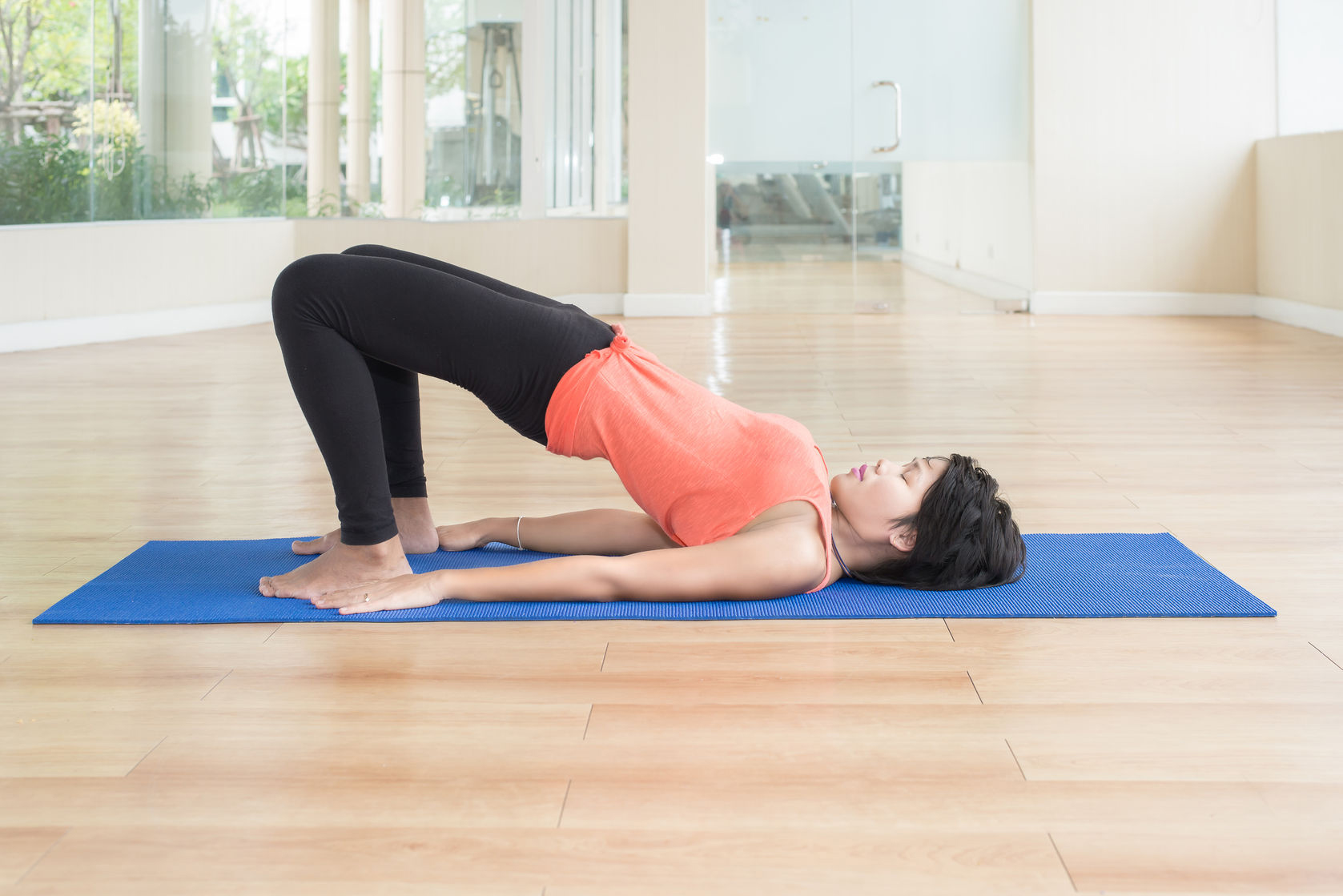Exercise Daily – Flexibility is crucial in our daily lives and physical activities. Whether you’re an athlete, a fitness enthusiast, or someone looking to improve overall mobility, increasing your flexibility can bring significant benefits. Flexibility and mobility training can enhance joint flexibility, allowing for a greater range of motion in people of all ages. Stretching your muscles regularly, particularly through dynamic and static stretching modalities, can significantly impact muscle length and ROM (range of motion).
The benefits of stretching are numerous, from improving shoulder range of motion to enhancing ankle dorsiflexion range of motion. Stretching techniques such as static stretch training and intensive stretching exercises can increase strength and flexibility, making stretching an essential component of any fitness regimen.
What is Flexibility Training?
Flexibility training involves specific exercises and techniques to increase the flexibility of muscles and joints. It is essential to various physical activities, including strength training, rehabilitation, and athletic performance. By engaging in flexibility training, you can improve your range of motion, allowing for better movement and performance in daily activities and sports.
The Role of Flexibility in Range of Motion
Range of motion (ROM) is the extent to which a joint can move in different directions. Flexibility directly influences ROM, determining how far a joint can flex and extend. When you have good flexibility, your muscles and joints can move more freely, allowing you to perform movements easily and gracefully.
Benefits of Flexibility Training
Engaging in flexibility training offers a multitude of benefits. Firstly, it improves your overall physical performance by enhancing your ROM. This leads to greater agility, better coordination, and increased efficiency in running, jumping, and lifting activities. Secondly, flexibility training helps prevent injuries by reducing muscle tension and promoting relaxation. Additionally, it can alleviate muscle soreness after intense workouts.

The Different Types of Stretching
Stretching exercises are the cornerstone of flexibility training. They can be broadly categorized into two main types: static stretching and dynamic stretching. Various types of flexibility training exist, each with its own characteristics and benefits. Let’s explore some common techniques:
Static Stretching
Static stretching involves holding a stretch for a prolonged period, typically 15 to 30 seconds. This type of stretching aims to increase muscle length and improve ROM gradually. Static stretches are commonly used during warm-up and cool-down routines.
Dynamic Stretching
Dynamic stretching involves moving the muscles and joints through a full range of motion in a controlled manner. It mimics the movements you will perform during your workout or activity. Dynamic stretches are often used in a warm-up routine to activate muscles and prepare them for action.
Active Stretching
Active stretching relies on the contraction of opposing muscles to achieve a stretch. You increase the stretch and improve ROM by actively contracting one muscle group while stretching another. Active stretching is commonly used in sports-specific training.
Passive Stretching
Passive stretching involves using external forces, such as a partner, gravity, or props, to assist in achieving a stretch. This type of stretching allows for a deeper stretch and is often used in rehabilitation or with the assistance of a trained professional.

Benefits of Flexibility Training
Improved Range of Motion
One of the primary benefits of flexibility training is improving the range of motion. Regularly engaging in flexibility exercises can gradually increase the flexibility of your muscles and joints, allowing them to move more freely. This increased range of motion enhances your performance in physical activities and improves your overall functional movement in daily life.
Enhanced Athletic Performance
Flexibility plays a crucial role in athletic performance. It enables athletes to perform movements with greater ease and efficiency and reduces the risk of injuries. Athletes with good flexibility can achieve optimal body positions during their activities, improving their technique and performance. Incorporating flexibility training into your athletic routine can give you a competitive edge and help you reach your full potential.
Reduced Muscle Tightness
Muscle tightness is common and can lead to discomfort and restricted movement. Regular stretching can help alleviate muscle tension and tightness by promoting relaxation and increasing muscle blood flow. By targeting specific muscle groups through flexibility exercises, you can effectively reduce muscle tightness and promote overall muscular balance.
Injury Prevention
Flexibility training plays a vital role in injury prevention. When muscles and joints are flexible, they are less prone to strain or sprain. By maintaining optimal flexibility, you provide your body with a protective mechanism against injuries. Additionally, flexibility exercises can help correct muscle imbalances and address postural issues, further reducing the risk of injuries during physical activities.
Incorporating Flexibility Training into Your Routine
Now that we understand the importance of flexibility training let’s explore how you can incorporate it into your routine.
Pre-Workout Warm-Up
Before engaging in any physical activity or exercise, it is crucial to warm up your muscles and prepare them for the upcoming movements. A dynamic stretching routine is an excellent way to warm your body and enhance your performance. Focus on major muscle groups and perform dynamic stretches that mimic the movements involved in your activity.
Post-Workout Cool-Down
After completing your workout or physical activity, it’s essential to cool down your body and aid in the recovery process. This is an ideal time to incorporate static stretches, as they help relax and lengthen the muscles. Hold each stretch for 15 to 30 seconds, focusing on the muscle groups you targeted during your workout. This cool-down routine will help prevent muscle soreness and promote flexibility gains.
Regular Stretching Sessions
In addition to pre-workout warm-ups and post-workout cool-downs, dedicated stretching sessions are beneficial for improving flexibility. Aim to perform stretching exercises at least three times a week. Dedicate 5 to 10 minutes to each session, focusing on major muscle groups and specific areas requiring extra attention. Gradually increase the intensity and duration of your stretches over time for continued progress.
Stretching can also play a vital role in flexibility and mobility, which are crucial for maintaining physical performance and well-being. Various stretching modalities, including static and dynamic stretching, have different effects on muscle flexibility. For example, the acute effects of dynamic stretching on muscle flexibility can prepare the body for physical activities, while static stretching immediately after exercise can aid in muscle recovery.

Flexibility Training Techniques
It’s essential to follow effective techniques to make the most of your flexibility training. Consider the following guidelines:
Stretching Exercises
Incorporate various stretching exercises into your routine, focusing on major muscle groups. Include stretches for your hamstrings, hip flexors, shoulders, and lower back. By targeting different muscle groups, you ensure overall flexibility and improved ROM.
Importance of Warm-Up
Before engaging in any stretching or physical activity, it is crucial to warm up your muscles. A warm-up increases blood flow, raises body temperature and prepares muscles for stretching. Incorporate dynamic movements, such as light jogging or jumping jacks, to prepare your body for flexibility training.
Specific Muscle Group Focus
To address limited flexibility in specific areas, emphasize stretching exercises that target those muscle groups. For example, if you struggle with hamstring flexibility, incorporate specific hamstring stretches into your routine. You can gradually increase your range of motion by focusing on areas that need improvement.
Gradual Progression and Frequency
Flexibility gains take time and consistency. Start with comfortable stretches and gradually increase the intensity and duration over time. Aim to stretch at least three times a week to maintain and improve your flexibility. Remember, patience and consistency are key to achieving long-term results.
Stretching Protocols for Improved Range of Motion
Flexibility training can be tailored to specific goals and circumstances. Here are some stretching protocols that can help you improve your range of motion:
Pre-Exercise Stretching
Performing static stretching exercises before exercise helps prepare your muscles for activity. Hold each stretch for 15 to 30 seconds, focusing on major muscle groups involved in your upcoming workout. Pre-exercise stretching can increase ROM and reduce the risk of injury.
Post-Exercise Stretching
After completing your workout, include static stretches in your cool-down routine. This helps promote muscle recovery and prevents tightness. Post-exercise stretching also aids in maintaining and improving your flexibility over time.
Rehabilitation and Injury Prevention
Flexibility training plays a crucial role in rehabilitation and injury prevention. If you’re recovering from an injury or have limited flexibility due to certain conditions, consult with a healthcare professional or physical therapist. They can guide you through specific stretching interventions to address your needs effectively.
Flexibility Training in Older Adults
Maintaining flexibility is particularly important for older adults. Regular flexibility exercises can help counteract the natural decline in flexibility that occurs with age. Focus on gentle mobility exercises and stretches that promote joint range of motion and flexibility. Always consult with a healthcare professional before starting any exercise program.

The Link Between Flexibility and Performance
Flexibility has a significant impact on athletic performance and overall physical capabilities. Let’s explore how flexibility training can enhance different aspects of performance:
Flexibility and Athletic Performance
In sports and athletic activities, having good flexibility provides a competitive edge. It allows for a greater range of motion, enabling athletes to perform movements with precision and efficiency. Whether you’re a runner, a gymnast, or a basketball player, improved flexibility can enhance your athletic abilities.
Flexibility and Strength Training
Flexibility and strength training go hand in hand. When your muscles are flexible, they can reach their full range of motion during strength exercises. This allows optimal muscle activation and engagement, leading to better strength gains. Incorporating flexibility exercises alongside strength training can help you achieve well-rounded fitness and performance.
Flexibility for Rehabilitation and Recovery
Flexibility training plays a vital role in rehabilitation and recovery from injuries. Gradually increasing your range of motion through targeted stretching can aid healing and prevent future injuries. Flexibility exercises help reduce muscle imbalances, alleviate muscle tightness, and promote overall joint mobility.
Common Mistakes in Flexibility Training
While flexibility training brings numerous benefits, it’s essential to avoid common mistakes that can hinder your progress or lead to injury. Be mindful of the following:
Overstretching and Risk of Injury
Pushing your body beyond its limits can result in overstretching and potential injury. Respect your body’s current capabilities and avoid forcing yourself into extreme positions. Gradually and safely increase the intensity of your stretches over time.
Neglecting Muscle Activation
Flexibility training should not solely focus on passive stretching. It’s equally important to activate and strengthen the muscles surrounding the joints. Incorporate strengthening exercises alongside your flexibility routine to ensure stability and support.
Inconsistent Training
Consistency is key when it comes to flexibility training. Skipping sessions or neglecting regular stretching can impede progress. Aim for a balanced routine that includes stretching exercises at least three times a week.

FAQs – Flexibility training for improved range of motion
Q: How long does it take to improve flexibility?
A: The time required to improve flexibility varies from person to person. Consistent stretching and flexibility training over several weeks or months can lead to noticeable improvements.
Q: Can stretching help with muscle strength?
A: While stretching primarily focuses on improving flexibility, it can indirectly contribute to muscle strength. By increasing your range of motion, you may be able to perform strength training exercises with better form and efficiency
Q: Is it better to stretch before or after a workout?
A: It is generally recommended to perform dynamic stretching before a workout to warm up the muscles and prepare them for activity. Static stretching is more suitable as a cool-down routine after the workout.
Q: Can flexibility training benefit older adults?
A: Absolutely! Flexibility training is especially beneficial for older adults as it helps maintain joint mobility, improve balance, and reduce the risk of falls.
Q: Are there specific stretching protocols for different sports?
A: Yes, different sports may require specific stretching protocols based on the movements involved. It’s advisable to consult a qualified coach or trainer for sport-specific stretching recommendations.
Conclusion
Flexibility training is a valuable aspect of overall fitness and well-being. Incorporating stretching exercises into your routine can improve your range of motion, enhance athletic performance, reduce muscle tension, and prevent injuries. Whether you’re an athlete, fitness enthusiast, or simply looking to maintain flexibility as you age, dedicating time to flexibility training will undoubtedly bring numerous benefits to your body and overall quality of life. So, why wait? Start incorporating flexibility training into your routine and enjoy its positive impact on your physical well-being.




